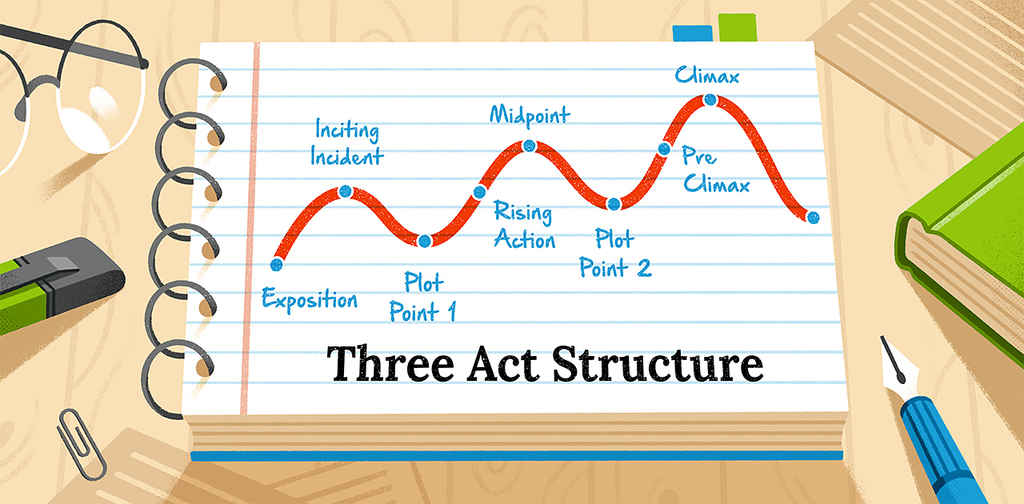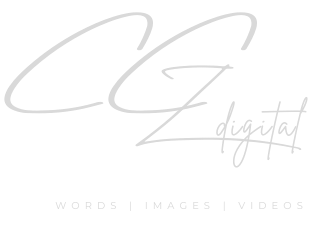The Three Act Structure as the name suggests divides the screenplay into three parts; beginning, middle, and end or Act 1: The Setup, Act 2: Confrontation, and Act 3: Resolution. These are not just three parts but individual acts where one part logically follows the other. The three acts help the screenwriter produce an interesting story but only if they are seamlessly linked together. This is done by ensuring connectivity among segments with one segment leading to the other. Although there are other structures too such as the Five Act Structure and the French New Wave but the three-act structure is more popular due to its simplicity. Below is a description of each segment of the three-act structure in detail:

Act 1: The Setup
The first segment of the three-act structure introduces the characters and the scenario in which the story is set. Typically Act 1 is spread over 20 to 30 pages of the script which amounts to 20 to 30 minutes of screen time. During this time, the audience becomes familiar with the main characters, their personality, and their surrounding world. In the case of a fantasy movie like Harry Potter, the audience becomes aware that a magical world exists. As the audience gains an understanding of the plot, an “inciting incident” occurs that leads the audience to the Second Act. The inciting incident is a strong hook that effectively captures the interest of the audience and hooks them to their seats. The inciting incident disrupts the life of the protagonist introducing new challenges. A plot point marks the end of Act 1 and also brings a twist to the story. A good setup is necessary as it establishes the context of the movie. A good setup is also necessary to create an emotional connection with the audience. The screenwriter must therefore plan this part of the three-act structure carefully.
For instance, in the film “Harry Potter and the Philosopher’s Stone”, Act 1 introduces us to the orphan Harry Potter and his mean relatives. The inciting incident is the letter he receives from Hogwarts and the appearance of Hagrid. Harry has to choose if he wants to go to Hogwarts where an unknown world awaits him or stay with his mean relatives. Act 1 ends with Harry dashing towards a wall labeled Platform 9 ¾ at the Kings Cross Station. This keeps the audience hooked as they yearn to find out what magical world awaits Harry behind that wall.
Act 2: The Confrontation
In this part of the Three Act Structure, the protagonist encounters problems. All attempts to find a solution turn futile as new obstacles and challenges come up. Increased action is the highlight of Act 2 which is also the longest part of the movie. The protagonist feels trapped with no way out. An additional storyline or the sub-plot which supports the main plot is also developed in this segment. A subplot is either added to increase tension or give the characters a new dimension or simply lengthen the act. The screenwriter must make sure that Act 2 or the confrontation is not weak or too predictable to keep the interest of the audience alive.
For instance, Act 2 of Harry Potter and the Philosopher’s Stone was quite eventful with Harry getting chosen as a seeker. Harry comes to know about the evil dark Lord Voldermort who is responsible for his parent’s death. There are rumors that Dark Lord is trying to return. Harry faces a near-death situation when someone cast a spell on his broom during the Quidditch match. Harry and Ron also fought a troll to save Hermione. The three of them got caught when visiting Hagrid at night. Despite searching the whole library, the trio was unable to find out the secret of the philosopher’s stone. The subplot was having to spend time in the Forbidden Forest as a punishment. Here Harry comes across magical creatures and hears more about Lord Voldermort. Act 2 also ends with more suspense as the three friends enter the chamber where Fluffy the ferocious three-headed dog is sitting on a trap door guarding a deadly secret.
Act 3: The Resolution
The resolution marks the end of the three-act structure. It is a difficult part as the writer has to tie all loose ends of the sub-plot and produce an exciting climax for the protagonist. Both are necessary for a satisfactory end of the movie. The protagonist in this part of the movie struggles with inner fears and conflicts. After overcoming inner fears, the protagonist confronts the powerful and otherwise invincible opponent and defeats him. In this part of the three-act structure, the screenwriter answers a question to give a resolution. Failure to give a satisfactory answer can result in criticism from the critics and the audience. The screenwriter must skilfully produce Act 3 as an abrupt ending can kill an otherwise good movie. Similarly, the screenwriter must not drag Act 3 as the audience may get bored.
Act 3 in of Harry Potter and the Philosopher’s Stone Harry and his friends encounter all protective spells to finally reach the chamber where the philosopher’s stone is kept. Here Harry has to go alone to face unknown dangers. He fights Voldermort who was controlling Professor Quirrel and gets the stone. The resolution was the confirmation that the evil Lord Voldermort is trying to gain strength to return. The movie has a happy ending with all loose ends tied neatly.
Conclusion
Not everyone uses the three-act structure, it is up to the screenwriter to use this framework. People have different perceptions of the Three Act Structures. Most people consider it the “art of storytelling.” This is because it provides a framework that guides the process of storytelling. It also keeps the screenwriter focused by keeping their thoughts organized. Three Act Structure also helps sharpen storytelling skills and also makes it easier to understand and follow the movie. One problem that may occur using the Three Act Structures is predictability. Sometimes, the plot and inciting incident are too simple and the audience can easily guess the end and hence lose interest in the movie. The screenwriter must therefore be careful and ensure there are enough twists and turns that will make the movie interesting and the end manageable.
